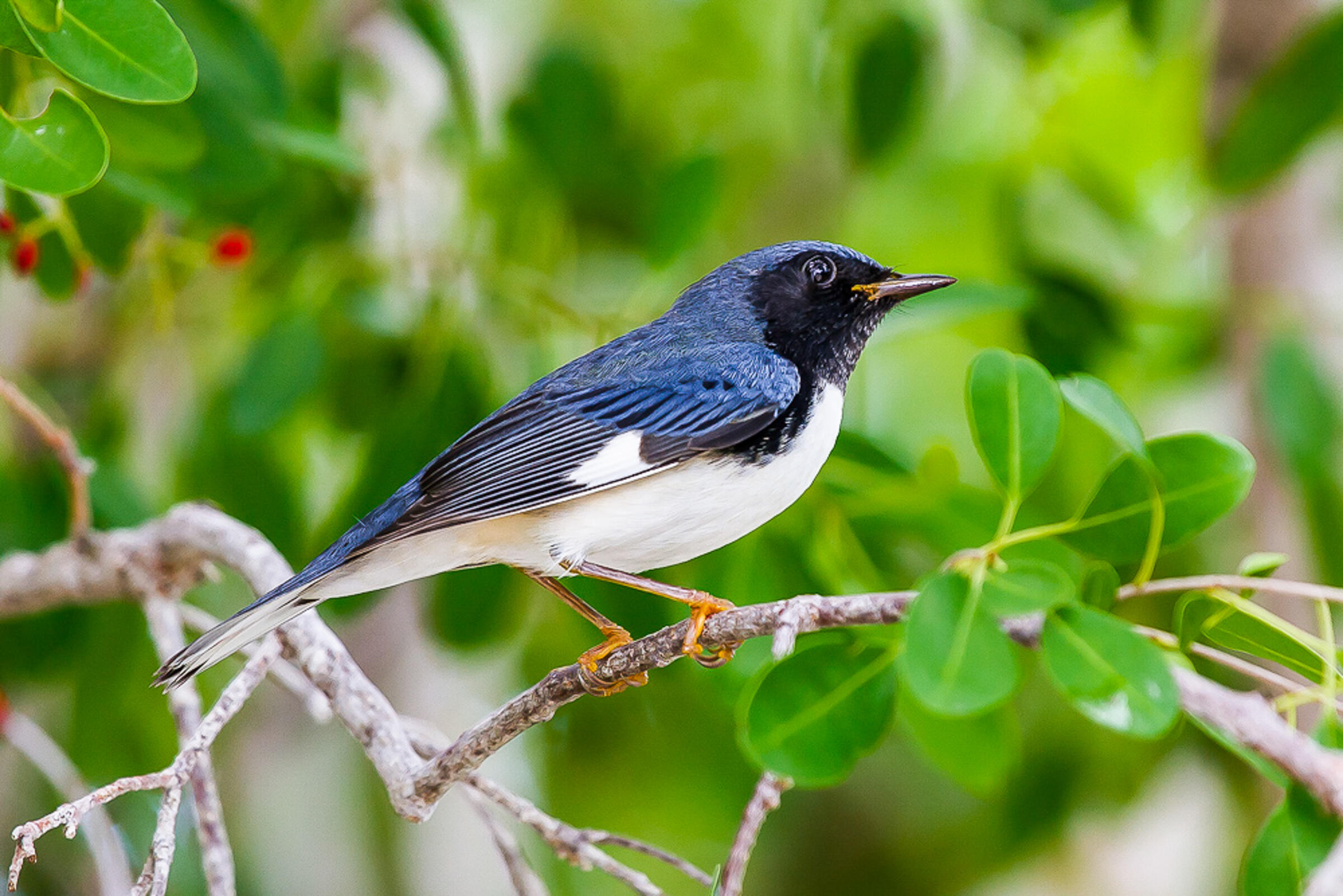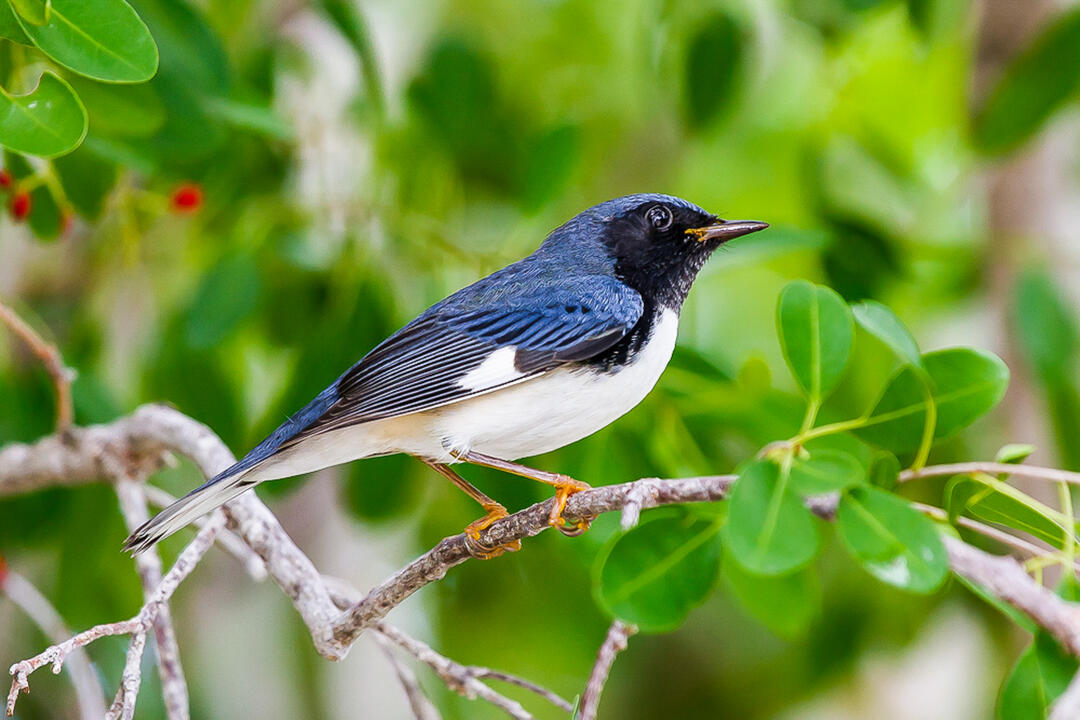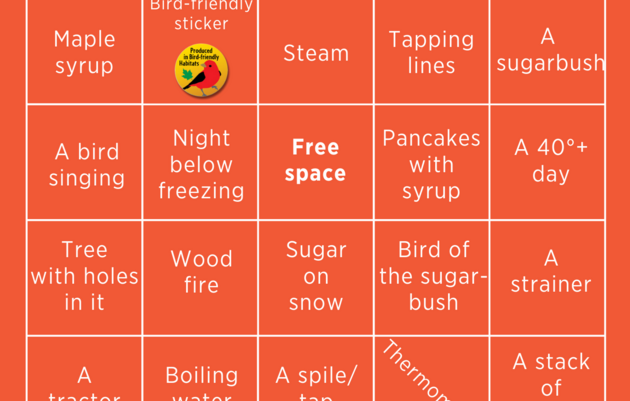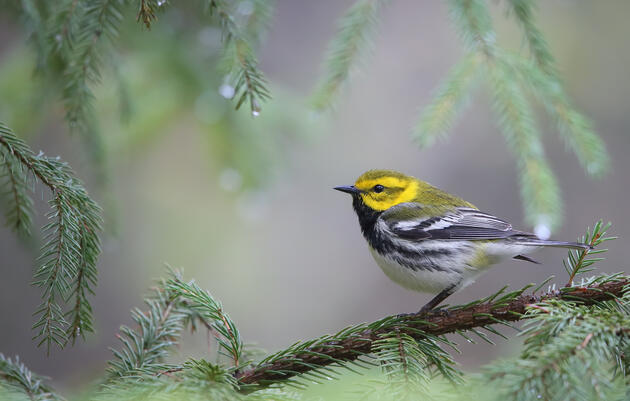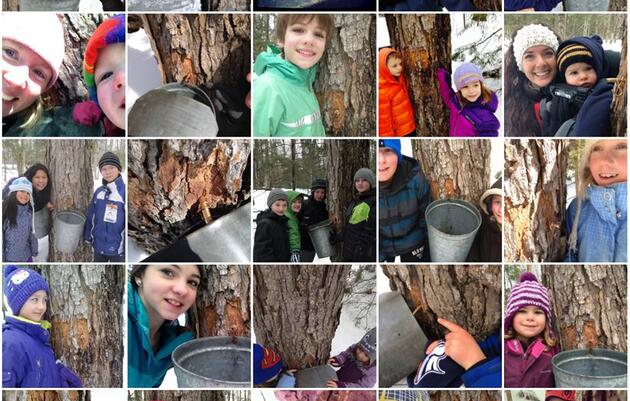I clearly remember the first time I heard a Black-throated Blue Warbler (Setophaga caerulescens) erupt into song in the forest canopy, shattering the late afternoon stillness in the Vermont woods. I was perhaps 10 or 11 years old, walking with my cousin across our family’s sugarbush, soaking up the joyous sounds of a babbling brook in the distance and passing under beams of dappled light filtering through the forest canopy, when suddenly, directly above us - a euphoric, buzzy zee-zee-zee-zreeeeeeee! cut through the humid spring air like an electric bullet-train. We stopped in our tracks due to the sound, and watched as a small bird with a white stomach, black throat (as its name suggests), and brilliant blue back threw its head skyward and continued to belt the same euphoric notes - the final one drawn out and rising with an upward inflection as if for dramatic effect. A moment later two similar songs erupted to either side of us, as if they were chorus singers echoing the lead singer’s anthem emanating directly above us. We searched the canopy for the other sources of sound, but never managed to catch a glimpse of the others, since the birds were incredibly quick hopping about the branches overhead. It was only later, when I thumbed through a dew-stained copy of a Peterson’s field guide, that I learned these birds were male Black-throated Blue Warblers - singing with all their strength in order to attract mates, and to defend their precious territories.
Black-throated Blue Warblers typically arrive in Vermont from their winter breeding grounds after the last maple sap has run. These neotropical migratory warblers spend the entirety of their summer breeding season in the sugarbush, which typically lasts from May - August, foraging and nesting within mixed hardwood forest stands containing sugar maples.
What I find to be particularly mind-boggling about these vocal birds is that after spending their winters foraging in mid-to-high elevation tropical forests of the Greater Antilles (from Puerto Rico to Cuba, Jamaica, and the Dominican Republic) or the eastern coasts of Belize, Mexico, and Honduras, they embark upon a 2,000+ mile - journey to return to intact forests across the Northeastern U.S. and southern Canada. Also, they complete this journey two times each year (if they are lucky!), despite facing multitudes of obstacles along the way - from tropical storms across the Gulf of Mexico to labyrinth-like cities sprawling across the entirety of the Eastern Seaboard. What’s even more remarkable is that Black-throated Blue Warblers (much like Vermont’s other warbler species) - complete this taxing journey despite being small animals, measuring only 13 cm long on average and weighing less than 10 grams (equivalent to two U.S. nickels!). Additionally, research has shown that Black-throated Blue Warblers often return to the same tract of forest for breeding from one year to the next, although they do not always establish their territories at exactly the same location (Holmes & Sherry 1992, Cline et al. 2013). In fact, the oldest recorded Black-throated Blue Warbler (a minimum of 9 years old), returned to the same patch of forest for seven subsequent breeding seasons at Hubbard Brook Experimental Forest in Thornton, NH! Therefore, if you encounter Black-throated Blue Warblers singing in the woods, there's a good chance that same bird will return after their tropical journey to the same vicinity the following summer.
During the breeding season, males aggressively defend 1-4 hectacre territories and, along with a (typically) single mate, do most if not all foraging within these defended areas (Webster et al. 2001). Over the summer, pairs remain together and typically lay 2-3 broods of eggs (2-4 eggs per clutch) in open nests constructed ~ 0.5 m off the ground, often in the sapling of overstory trees such as sugar maples and American beech. During this time, parents provision nestlings with food; primarily lepidoptera larvae (butterfly and moth caterpillars), spiders, and flies (Goodbred & Holmes 1996, Stodola et al. 2010). Deciduous trees (including sugar maples!) are extremely important for Black-throated Blue Warblers during foraging, given that they primarily glean insects from the bottom of leaves.
Aside from providing surfaces for nesting and foraging, new research has begun to highlight a surprising connection between sugar maples - along with other seed-bearing tree species - and the survival of Black-throated Blue Warbler nests. Currently I’m working on a research project examining the fate of 1,831 Black-throated Blue Warbler nests observed over the course of 34 years (1986-2019) at Hubbard Brook Experimental Forest, located across the Connecticut River in the White Mountains of Thornton, New Hampshire. Sugar maples produce an abundance of wing-like seed pods called “samaras” that begin to fall from the canopy as they ripen around September and October. By comparing annual measurements of seed production to abundances of seed-eating warbler nest predators (i.e. red squirrels, eastern chipmunks, mice, and Blue Jays) and the frequency of nest predation events, we’ve found evidence indicating that years of high seed production (mast) among sugar maples (as well as beech and white ash) leads to an increase in the abundance of seed-eating mammals and thus increased nest predation the following year. Overall, this oscillating pattern between years of high and lower seed production among overstory trees kicks off a chain-reaction of events which can lead to greater or lower densities of nest predators during the following summer and higher or lower nesting success, respectively. This is a prime example of what ecologists call a “trophic cascade” - an ecological phenomenon triggered by the addition or removal of a food source or predator, which results in a complex effect on different populations of animals that either feed upon or are prey for other species in the forest.
Although nest predation is quite high among Black-throated Blue Warblers (on average between 20-55% of nests within a given season are eaten by predators including red squirrels, eastern chipmunks, mink, and jays, Holmes et al.1996), these small birds compensate as double-brooders, meaning they can initiate a second or even third clutch of eggs after a successful nesting attempt or if their eggs are snatched up by hungry predators! Additionally, despite the potential impacts of seeds on nest predator abundances, it’s important to remember that sugar maples actually provide many benefits to Black-throated Blue Warblers. As mentioned previously, as a low-shrub-nesting species, Black-throated Blue Warblers depend on saplings, including sugar maples, as places to nest and forage.
The next time you walk through a sugarbush or pour a delicious drizzle of maple syrup on top of your waffles, stop to think about how Black-throated Blue Warblers, and many other species of migratory birds, are connected to the same trees that produce the maple we love so much. It turns out that migratory songbirds - arriving from thousands of miles away near the equator - think maple is pretty sweet too!
Short & Quick Species Information
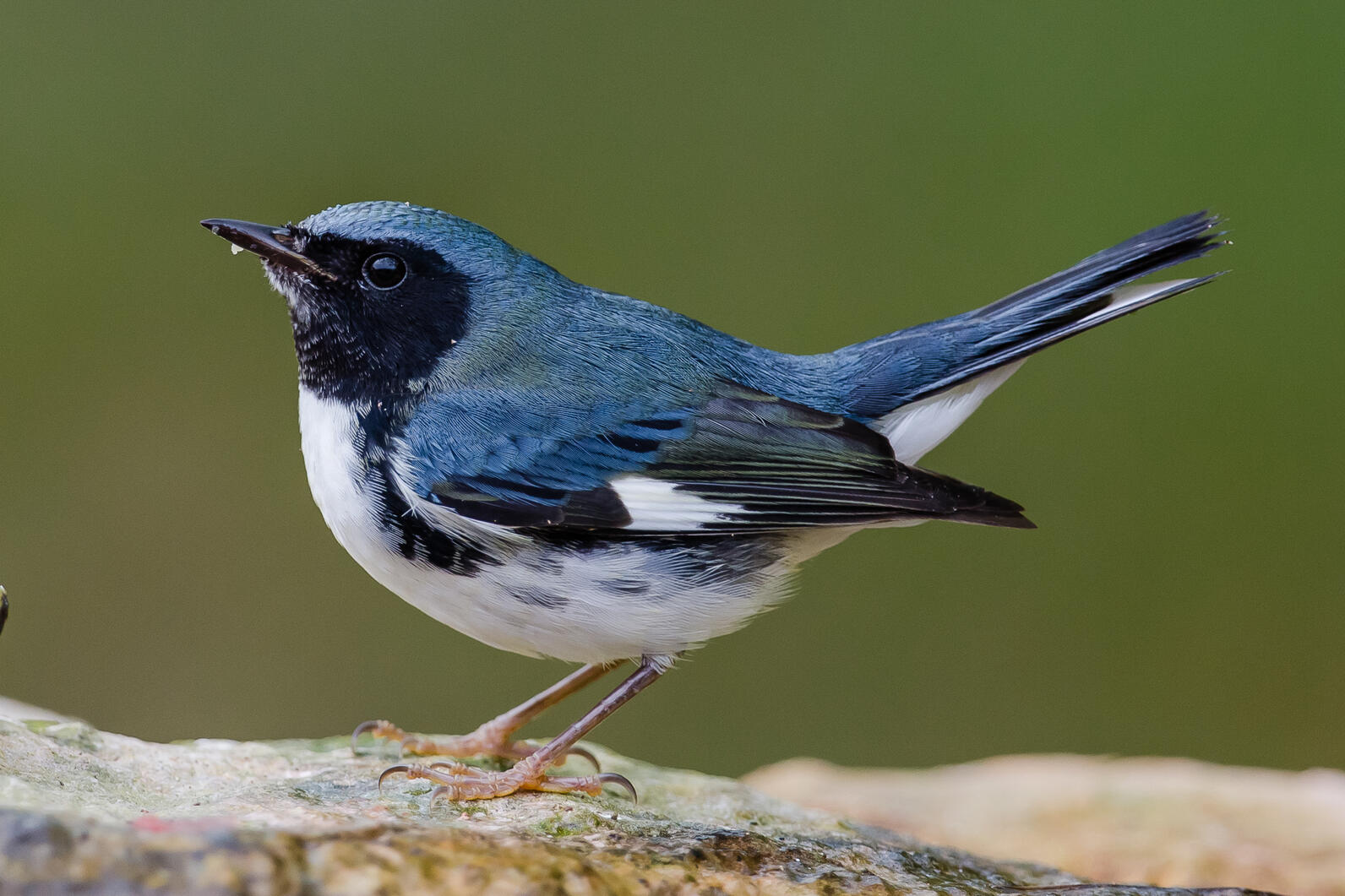
ID: Male Black-throated Blue Warblers have a dark blue back, black face, throat and flanks, whitish lower underparts, and a large whit wing patch that is visible in flight. Females are greenish-gray in color, with a small, distinct white wing spot and a whitish or cream-colored stripe over the eye.
Habitat: During the spring and summer breeding season, Black-throated Blue Warblers live in large, more or less continuous tracts of deciduous or mixed deciduous/ coniferous forests with a thick understory of deciduous or broad-leaved evergreen shrubs. They typically breed in forests dominated by maples (Acer), birches (Betula), beech (Fagus grandifolia), and other hardwoods with interspersed stands of eastern hemlock (Tsuga canadensis) and spruce (Abies balsamea). In the mountains of Vermont, Black-throated Blue Warblers are typically found foraging and nesting in an understory comprised of hobblebush (Viburnum) along with small tree saplings.
Diet: Black-throated Blue Warblers are insectivorous birds - meaning they feed mainly on insects, including caterpillars, crane flies, spiders, and flies. They have also been known to eat small berries and fruits, especially during the winter months when they migrate south to the Caribbean and coast of Central America.
Feeding behavior: Black-throated Blue Warblers forage from the ground to high in the tree canopy. I often observe them gleaning insects in mid-air from the bottom of leaves in the mid-to- upper tree canopy. They are (typically) solitary birds during the breeding months, although mated pairs can sometimes be seen searching for insects together.
Cool adaptation: Black-throated Blue Warblers can usually replace nests destroyed by bad weather or nest predators. In some cases, Black-throated Blue Warbler pairs have been observed laying four clutches of eggs in a single breeding season!
Fun fact: Males and female Black-throated Blue Warblers look so different from one another that the two sexes were initially considered to be separate species by naturalists, including Wilson (1810) and John James Audubon (1841).

